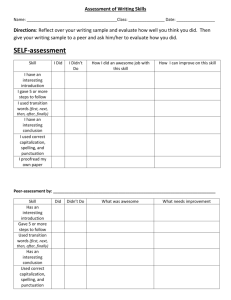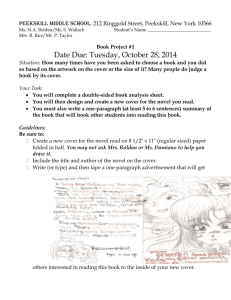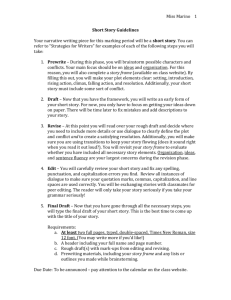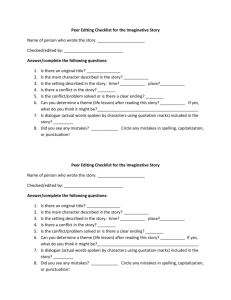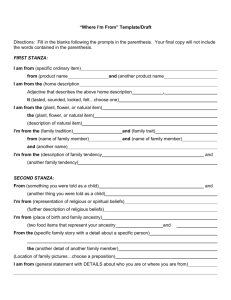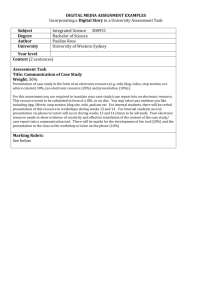RAFT Rubric
advertisement
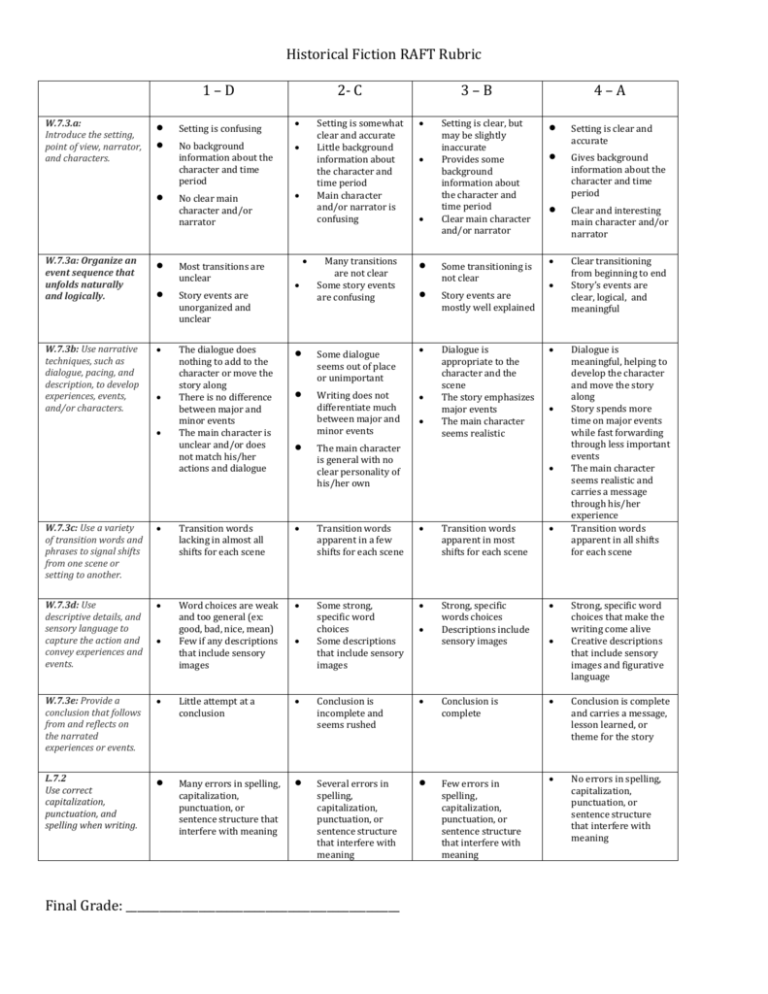
Historical Fiction RAFT Rubric 1–D W.7.3.a: Introduce the setting, point of view, narrator, and characters. W.7.3a: Organize an event sequence that unfolds naturally and logically. W.7.3b: Use narrative techniques, such as dialogue, pacing, and description, to develop experiences, events, and/or characters. Setting is confusing 2- C No background information about the character and time period No clear main character and/or narrator Most transitions are unclear Story events are unorganized and unclear The dialogue does nothing to add to the character or move the story along There is no difference between major and minor events The main character is unclear and/or does not match his/her actions and dialogue 3–B Setting is somewhat clear and accurate Little background information about the character and time period Main character and/or narrator is confusing Many transitions are not clear Some story events are confusing Some dialogue seems out of place or unimportant Writing does not differentiate much between major and minor events Setting is clear, but may be slightly inaccurate Provides some background information about the character and time period Clear main character and/or narrator Some transitioning is not clear Story events are mostly well explained Dialogue is appropriate to the character and the scene The story emphasizes major events The main character seems realistic The main character is general with no clear personality of his/her own 4–A Setting is clear and accurate Gives background information about the character and time period Clear and interesting main character and/or narrator Clear transitioning from beginning to end Story’s events are clear, logical, and meaningful Dialogue is meaningful, helping to develop the character and move the story along Story spends more time on major events while fast forwarding through less important events The main character seems realistic and carries a message through his/her experience Transition words apparent in all shifts for each scene W.7.3c: Use a variety of transition words and phrases to signal shifts from one scene or setting to another. Transition words lacking in almost all shifts for each scene Transition words apparent in a few shifts for each scene Transition words apparent in most shifts for each scene W.7.3d: Use descriptive details, and sensory language to capture the action and convey experiences and events. Word choices are weak and too general (ex: good, bad, nice, mean) Few if any descriptions that include sensory images Some strong, specific word choices Some descriptions that include sensory images Strong, specific words choices Descriptions include sensory images W.7.3e: Provide a conclusion that follows from and reflects on the narrated experiences or events. Little attempt at a conclusion Conclusion is incomplete and seems rushed Conclusion is complete Conclusion is complete and carries a message, lesson learned, or theme for the story L.7.2 Use correct capitalization, punctuation, and spelling when writing. No errors in spelling, capitalization, punctuation, or sentence structure that interfere with meaning Many errors in spelling, capitalization, punctuation, or sentence structure that interfere with meaning Several errors in spelling, capitalization, punctuation, or sentence structure that interfere with meaning Final Grade: _________________________________________________ Few errors in spelling, capitalization, punctuation, or sentence structure that interfere with meaning Strong, specific word choices that make the writing come alive Creative descriptions that include sensory images and figurative language
